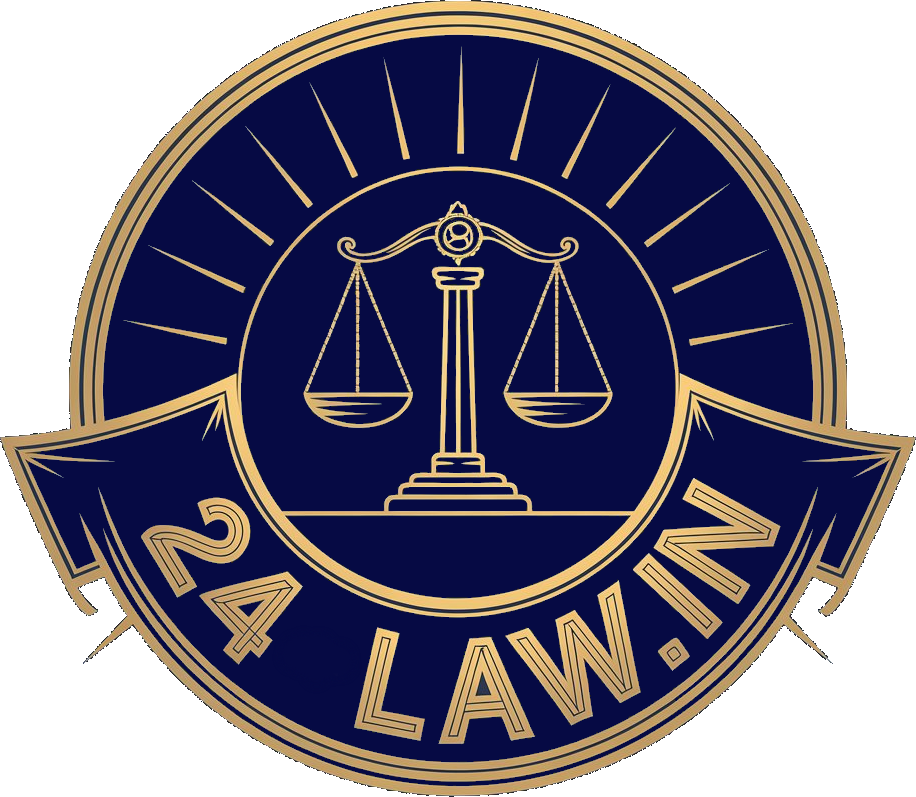Lawyer Must Disclose Party’s Death To Court Under Rule 10A | Supreme Court Says Suit Cannot Abate If Defendant’s Counsel Suppressed Death
- Post By 24law
- July 17, 2025

Kiran Raj
The Supreme Court of India Division Bench of Justice J.B. Pardiwala and Justice R. Mahadevan held that the High Court erred in concluding that a first appeal stood abated due to the death of some respondents, without considering the mandatory implications of Order XXII Rule 10A of the Code of Civil Procedure. The Court set aside the High Court judgment and remanded the matter for fresh consideration of the second appeal. The Supreme Court directed the High Court to examine whether the decree in question was joint and indivisible and to decide accordingly. It observed that the appellate court had failed to ensure procedural fairness and had overlooked the duties cast upon legal representatives and pleaders under the procedural framework. The appeal was partly allowed with specific timelines for the High Court to conclude proceedings.
The case originated with the filing of Title Suit No. 106 of 1984 by the original plaintiffs in the Court of the Sub Judge (I), Gopalganj. The plaintiffs sought a declaration of title and recovery of possession concerning suit land in Village Harkhauli, P.S. Mirganj, District Gopalganj, recorded under Khewat Nos. 11 and 12, revisional survey Nos. 688, 689 and 690, under Khata Nos. 571 and 574.
The trial court framed several issues, including the maintainability of the suit, the plaintiffs' right to sue, the occupancy rights of the defendants, and whether the plaintiffs had subsisting title and possession over the suit land. By judgment and decree dated 05.07.1989, the trial court dismissed the suit, concluding that the plaintiffs had failed to establish their case.
Aggrieved, the plaintiffs filed Title Appeal No. 60 of 1989 (later renumbered as Title Appeal No. 58 of 2007) before the Court of Additional District Judge (I), Gopalganj. On 02.06.2009, the First Appellate Court allowed the appeal, set aside the trial court’s judgment, and decreed the suit in favor of the plaintiffs. The appellate court found that the plaintiffs had title over the suit lands and had been illegally dispossessed. It held that the plaintiffs were entitled to mesne profits from the date of dispossession until recovery of possession, which was to be enforced either through eviction or demolition of existing structures.
Subsequently, the original defendants filed Second Appeal No. 190 of 2008 before the High Court of Judicature at Patna. The High Court identified four substantial questions of law, including whether the appellate court's decree was vitiated due to its being passed against deceased respondents whose legal heirs were not brought on record. The High Court took the view that some respondents had died during the pendency of the first appeal and their legal representatives were not substituted. It found that the appeal had abated due to the non-substitution and concluded that the decree passed by the First Appellate Court was void as it was rendered against deceased parties.
According to the High Court, the first appeal was not properly constituted as all necessary parties were not before the court. It stated that in the event of a joint and indivisible decree, abatement concerning one or more parties vitiates the entire appeal. It further held that Order XXII Rule 10A does not override the mandatory provision for substitution under Order XXII Rule 4.
The original plaintiffs approached the Supreme Court challenging this order. The primary contention raised on behalf of the appellants was that the High Court erred in treating the appeal as abated, ignoring that the respondents had failed to discharge their obligation under Order XXII Rule 10A of the CPC. Counsel for the plaintiffs argued that the respondents allowed the first appeal to proceed on merits despite knowing that some of the original defendants had passed away. It was further submitted that the deceased respondents were either already represented by their legal representatives or were proforma respondents who had no substantial connection with the suit property.
The plaintiffs provided charts categorizing the deceased respondents and showing which respondents were already represented or irrelevant to the adjudication. The first chart listed parties to the impugned sale deeds and demonstrated that the legal representatives of critical defendants were already on record. The second chart categorized the deceased respondents as proforma respondents and indicated they had no bearing on the subject matter of the appeal.
The respondents countered that the High Court was right in holding that failure to substitute legal heirs under Order XXII Rule 4 results in abatement, and that Order XXII Rule 10A did not mitigate this failure.
The Supreme Court held that the High Court's approach was incorrect and procedurally flawed. It recorded, "We regret to state that we are thoroughly disappointed with the manner in which the High Court dealt with the Second Appeal and more particularly the understanding of the High Court as regards the position of law on the issues in question."
The Supreme Court recorded that the defendants did not inform the First Appellate Court of the death of certain parties despite having knowledge of the same, and therefore failed to comply with Order XXII Rule 10A. It stated, "Unless this primary obligation is discharged and it is established with cogent evidence that the opposite party had sufficient opportunity to know and had in fact knowledge of the death of the defendant, the plea of abatement of the suit at the instance of party having failed to comply with the obligation mentioned under Rule 10A... cannot be entertained."
The Court stated that Rule 10A imposes a duty on the pleader to inform the court upon learning of a party's death. It explained the legislative intent behind Rule 10A: "Rule 10A is intended to avoid delay...it seeks to mitigate the hardship arising from the fact that a party to a suit may not come to know about the death of the other side during the pendency of the proceedings."
Referring to Gangadhar v. Raj Kumar, the Court observed that "Rule 10A... casts a duty upon the advocate...to intimate the court about the death of his client. For this purpose, a deeming fiction has been created that the contract between the (deceased) client and the pleader subsists to that limited extent."
The Court added, "The legislative intention of casting a burden on the learned advocate of a party to give intimation of the death of the party represented by him...was that the other party may not be taken unawares...and appeal has abated."
The Court invoked the maxim nullus commodum capere potest de injuria sua propria, stating that, "No one should be permitted to use the judicial process for earning undeserved gains...It is the duty of the court to ensure that dishonesty or any attempt to abuse the legal process must be effectively curbed."
The Supreme Court clarified that the concept of abatement should not be used to invalidate a decree when the deceased’s pleader did not comply with Rule 10A. It noted that Rule 10A was intended "to allow for mitigation of the legal effects of delay" and that "failure of a party to perform the duty under Rule 10A constitutes a wrongful act."
The Court distinguished between ex injuria jus non oritur and nullus commodum capere potest de injuria sua propria, stating, "While the former pertains to a ‘right’...the latter relates to an ‘advantage’...that a wrongdoer may derive from his wrongful conduct."
The judgment noted, "It would be preposterous to say that a court of conscience would take no cognizance of such a failure in duty...and allow an erring party through its pleader to derive undue advantage thereof."
The Supreme Court stated, "We are afraid, the understanding of the High Court is not correct...The line of reasoning adopted by the High Court if upheld would render Order XXII Rule 10A otiose."
It cited P. Jesaya (Dead) by Lrs. v. Sub-collector to illustrate that courts should not permit parties to take advantage of their own failure to report the death of a litigant: "These sort of tactics must not be permitted to prevail...This is in effect an attempt to take not just the other side but also the court for a ride."
The Supreme Court allowed the appeal in part and set aside the judgment and order of the High Court in Second Appeal No. 190 of 2008. The matter was remanded to the High Court for a fresh hearing of the second appeal, with the Court stating, "We are inclined to remand the matter to the High Court for fresh hearing of the second appeal keeping in mind the principles of law as discussed in this judgment."
It restored the Second Appeal No. 190 of 2008 to its original file and directed that it "shall be heard afresh and decided on its own merits after giving opportunity of hearing to both the parties." The Court noted the protracted history of the litigation, dating back to 1984, and directed the High Court to expedite the matter: "Since this litigation is of 1984, we direct the High Court to take up the Second Appeal No. 190 of 2008 for fresh hearing and decide the same within a period of three months from the date of receipt of the writ of this order."
The Supreme Court also provided specific procedural guidance depending on the High Court's findings. If the High Court concludes that the decree is joint and indivisible and that the appeal stood abated due to non-substitution of legal representatives, it must remand the matter to the First Appellate Court with liberty to the plaintiffs to file an appropriate application to set aside the abatement and bring the legal representatives on record. The Court directed, "If the High Court reaches the conclusion that the decree is joint and indivisible and with the death of some of the defendants, the entire First Appeal could be said to have abated then it shall remand the matter to the First Appellate Court so as to give an opportunity to the plaintiffs to prefer an appropriate application for setting aside of the abatement and bring the legal heirs on record and thereafter hear the first appeal once again on its own merits."
On the other hand, if the High Court finds that the decree is not joint and indivisible, and that abatement does not affect the entirety of the appeal, it must proceed to decide the Second Appeal on merits: "In the event the High Court reaches the conclusion that the First Appeal as a whole could not be said to have stood abated as the nature of the decree is such that it cannot be said to be joint and indivisible then the High Court shall hear the Second Appeal on its own merits on other issues involved in the litigation."
The Court further directed, "The Registry is directed to circulate one copy each of this judgment to all the High Courts."
Advocates Representing the Parties:
For the Petitioners: Mr. Gagan Gupta, Advocate
For the Respondents: Mr. Shantanu Sagar, Advocate
Case Title: Binod Pathak & Ors. v. Shankar Choudhary & Ors.
Neutral Citation: 2025 INSC 842
Case Number: Civil Appeal No. 7706 of 2025 (arising out of Special Leave Petition (C) No. 1536 of 2015)
Bench: Justice J.B. Pardiwala and Justice R. Mahadevan


